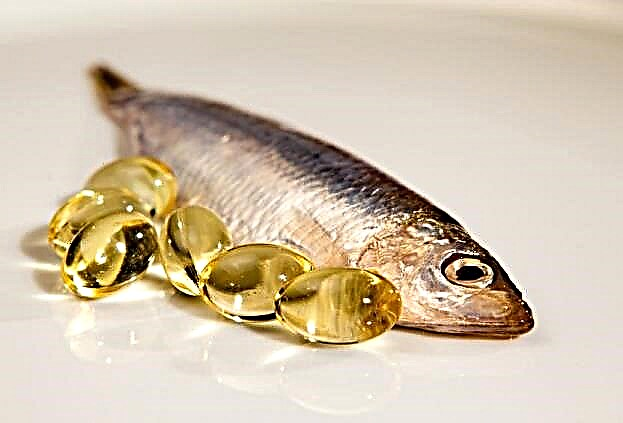
Child development has its own characteristics. Rapid growth is associated with the active development of the musculoskeletal system. Often, when moving in children, there is a characteristic crunch or click in the joints. To understand why a child's joints crackle, it is worth finding out what it is connected with and what it means.
What is it and what are the reasons for its appearance?
The first years of a child's life are accompanied by the active growth of all tissues and organs. The appearance of a crunch during movement is a violation of the development of the musculoskeletal system. This is often noticed by pediatricians in newborns and infants during regular patronage or monitoring babies. A variety of reasons can lead to the development of abnormalities in the work of the joints. They should be separated taking into account the age of the child, since at each age the cause of the appearance of a crunch in the joints can be different.


In newborns and infants
Often in a baby, joints crackle when the development of the infant's cartilage is inadequate. This is a temporary state, as the child grows up, it completely disappears.
The appearance of a crunch in the knee joints in a baby when flexing them should not cause panic horror in parents. In most cases, this symptom disappears completely after a few months.
Doctors note that in newborns, the density of bone and cartilage tissue is not yet the same as in older children. The performance of any active movements is accompanied by the appearance of characteristic clicks in the joints or even a crunch. This symptom manifests itself in babies at the age of 3-4 months, when the child begins to actively move the arms and legs.

Only an experienced pediatrician can distinguish the norm from pathology. If the parents heard that the baby's joints emit when moving a characteristic sound resembling a crunch should be shown to the baby by the pediatrician... In some situations, the doctor may refer the baby to a pediatric orthopedist. This specialist is already engaged in a more detailed study of diseases of the musculoskeletal system in babies and is able to identify the cause of the squeaky joints.


Another reason for the appearance of sounds in babies when moving in the joints is insufficient formation of joint lubrication. Normally, this fluid is inside the articular cavity. It is necessary for the implementation of the full range of all movements performed. A deficiency in the formation of such a fluid indicates pronounced disorders and more common in premature babies... As the baby grows and develops, this symptom completely disappears.


If the child grows, and the crunch in the joints during movement persists, in this case, you should definitely seek the advice of an orthopedist. In this situation, it is necessary to conduct an extended survey.
It is likely that the reason for the persistence of unpleasant sounds during the work of the joints is a disease of the musculoskeletal system, which is progressing.


In preschool kids
As the baby develops and grows, the number of pathological conditions increases, which can lead to the appearance of various disorders of the joints. Some of them are very dangerous and may be accompanied by the development of adverse complications.

Rheumatological diseases are one of the most common pathologies, in which the joints creak in babies. Usually this unfavorable symptom develops in a child during active movements. Small and large joints can be involved in the pathological process. It all depends on the original disease that caused the appearance of these signs in the baby.
A common reason a child has joints snap, is dysplasia... Today, this congenital condition is more common in childhood. Large joints are often involved in the pathological process. There are several degrees and stages of this disease. The disease itself develops gradually, and the adverse symptoms increase, increasing the creak.


Reactive arthritis is an acute condition characterized by a violent progressive inflammatory process in the joint. The pathology is most often caused by various microorganisms and traumatic injuries. The peak incidence occurs between the ages of 5 and 13 years. Treatment of this disease includes the mandatory elimination of the cause that caused the appearance of adverse symptoms in the child.


Some babies show symptoms of hyperamobility. This pathological condition has a fairly pronounced genetic condition. A violation of the development of excessive joint flexibility in the baby is characterized. During the movement, various sounds or clicks are often heard (the joints of the arms and legs can be hypermobile).


Schoolchildren
Joints in children can crackle with juvenile rheumatoid arthritis. This pathology occurs most often at school age. The pronounced inflammatory process contributes to the fact that all the internal elements of the joint swell and become inflamed. Ultimately, the disease manifests itself in the appearance of clicks and crunching in the baby, which occur while walking or during other active movements.


Doctors note that this disease is more often recorded in schoolgirls. Girls get sick 2-2.5 times more often than boys. The disease has an autoimmune nature and proceeds with the gradual manifestation and intensification of adverse symptoms. In some cases, prolonged and severe juvenile arthritis leads to the development of signs of disability in the child in the future.


Injuries are a fairly common cause of a child's appearance in the joints of various sounds and crunching during movements. Children attending sports clubs suffer from traumatic arthritis many times more often than their peers who are not involved in sports.
The most dangerous sports are hockey, football, boxing, running and any kind of martial arts.
During exercise, children can seriously injure each other's knees and hands, which can cause various joint damage.


Infectious diseases can lead to the development of inflammation in school-age kids. Arthritis can be caused by a wide variety of bacteria entering the area of the joints through the bloodstream from the primary site of infection, which can be localized in a wide variety of organs. Once in the joint cavity, microorganisms cause inflammation and severe damage, which is manifested in a child by the appearance of a crunch when making active or passive movements.


In adolescents
Rheumatism is a serious rheumatological disease, which is a complication of angina transferred in early childhood. The course of this disease is usually severe. The baby develops movement disorders associated with malfunctions of damaged joints and damage to the cardiovascular system. In children with rheumatism, doctors often identify a heart defect. This disease is treated by a rheumatologist.


Arthritis that occurs during puberty is less common in adolescents. These diseases are characterized by damage to large joints. These changes occur during the restructuring of the hormonal background. An excess of some hormones with a lack of others provokes the formation of an excess amount of joint fluid in the joints. Ultimately, this leads to the development of arthritis and crunching of the joints.


Excessive physical activity can cause damage to the articular elements in adolescents. Large joints are often affected. These include the shoulder and knee joints. The treatment requires the imposition of special splints or the use of orthopedic orthoses.
To establish the correct diagnosis, mandatory laboratory tests and studies are required. All children, from infancy to adolescents with joint pathologies, must be prescribed a general blood and urine test, as well as biochemical studies. X-rays are taken to determine the extent of damage to the anatomical structures that form the joint. In difficult diagnostic cases, computed or magnetic tomography is used.


How to find out why a child has joint pain, see the next video.



